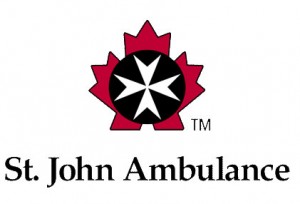Safety & Compliance
Workers Safety and Insurance Board Registration
The contractor that you hire should be registered with the WSIB, otherwise this makes you responsible for any injuries that may be associated with your project.
Liability Insurance
Liability Insurance protects the contractor as well as the project owner – you – from any unexpected incidents that may involve damage to your property or any neighbouring properties.
Contract
A contract is important to protect both the project owner – you – and the contractor.
Supplier References
It is important to verify that your contractor pays his/her suppliers regularly and on time to prevent you from becoming liable for any debts with their creditors.
Client References
Client references are the most common and effective way to determine your contractor’s credibility as well as their quality of work. Do not hesitate to ask for references and to actually see projects that your contractor has completed in your area.
Equipment Resources
To complete your project efficiently, your contractor should have the necessary equipment and resources.
Years in Business
Usually the number of years a contractor has been business determines the level of expertise in their field as well as their stability in the industry.
Warranty
A contractor should always provide you with a written warranty that coincides with the industry norm.
Research has proven that a safe workplace improves the bottom line. St. John Ambulance is Canada’s leader in first aid training and products. With state-of-the-art teaching aids and effective classroom instructors, we offer the highest quality in first aid, CPR and health-promotion training. Our courses often exceed government regulations. And that’s not all, by choosing St. John Ambulance programs, you’re also giving back to your community by supporting our community service volunteers.
All Truelock Interlock employees are trained in the use of First Aid.
The Workplace Hazardous Materials Information System (WHMIS)![]()
The Hazardous Materials Information System, known as WHMIS, came into effect in 1988. It sets out the duties and obligations of suppliers, employers and workers regarding the safe use, storage and transportation of hazardous materials being used in the workplace. Under WHMIS Regulations, employers are obligated to educate their workers on the potential dangers involved with the materials they use while performing their jobs. Workers need to be able to make informed decisions about the products they use. The improper use of hazardous materials can lead to disastrous results, in both the short and long term. Being safe and working safely is everyone’s responsibility.
The owner of Truelock Interlock and the foreman are Trained and Certified in W.H.I.M.S.
Effective Safety Supervision – Due Diligence (An Executive Overview)
Today’s workplace is filled with many challenges, and the supervision of workers has become increasingly difficult, especially where safety is concerned. Under the Occupational Health and Safety Act, today’s supervisor is required to “take every precaution reasonable in the circumstances to protect the health and safety of the worker”. This is no easy task when you take into account the overwhelming number of regulations that govern safety in the workplace.
The Due Diligence program is designed to enhance the understanding of safety regulations, safe policies and procedures and the need for due diligence as required by the Ontario Ministry of Labour. In addition, techniques for the enforcement of policies and procedures are also covered, specifically tailored to each module.
Rights and Responsibilities
Each person in the workplace has rights, but with these rights come responsibilities. The roles and duties of companies, supervisors and workers are covered in detail as set forth in the Occupational Health and Safety Act. It has been proven that over 85% of all workplace incidents, accidents, injuries and deaths occur because a worker committed an unsafe act or violated safety procedures. In these cases, the supervisor may also be held liable because effective precautions were not taken or safety policies were not enforced.
Hazard Recognition
Complacency is the killer of safety in the workplace! All too often, workers and supervisors let unsafe acts or conditions go unchecked, which dramatically increases the chance of a serious accident. In this section, some of the rather alarming statistics are covered, such as the fact that, in Ontario, every ten minutes 2 people are killed and 170 people suffer a serious disabling injury as a result of accidents in the workplace. Almost all of these accidents could have been prevented had safety procedures been designed, enforced and followed. This section deals primarily with developing a PROACTIVE safe work attitude.
Specific Enhancements to Effective Safety Supervision
This section deals with the specific needs and requirements of specialized functions within a facility. This is where we match up duties with specific regulations and develop an action plan for increasing compliance levels. By identifying common infractions, we can better understand what to look for, thereby providing the opportunity to reduce risks or eliminate hazards altogether. This section is backed up by video tapes to enhance the learning experience.
Mike Trudeau, the owner of Truelock Interlock, has completed the Supervisory Due Diligence course.
Excavation, trenching, and shoring are among the most hazardous construction operations. Every Employee at Truelock Interlock is given a course on the relative regulatory requirements and safe work practices. This course includes soil mechanics, shoring procedures, sloping and benching, and trench shields. In addition to the hazards of cave in and engulfment, the course also covers the other hazards common to this type of landscaping.
The owner of Truelock Interlock and the foreman are Trained and Certified in Trenching and Shoring techniques and safety.


